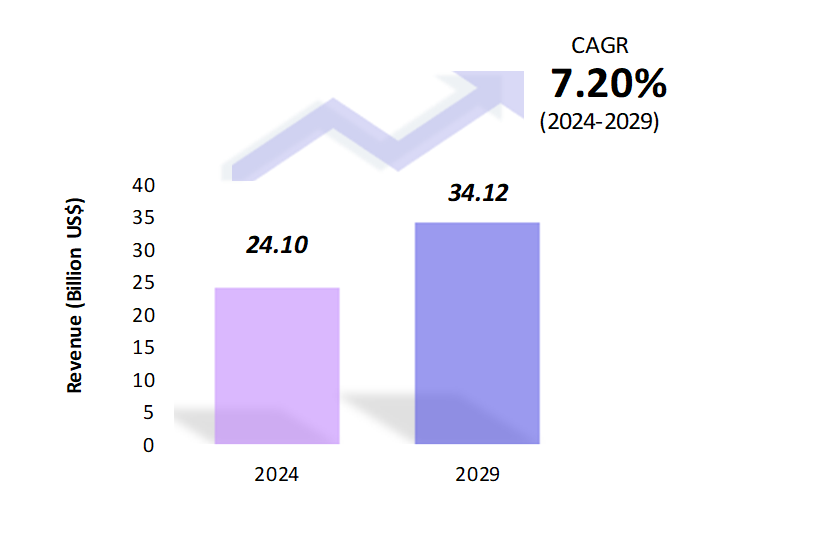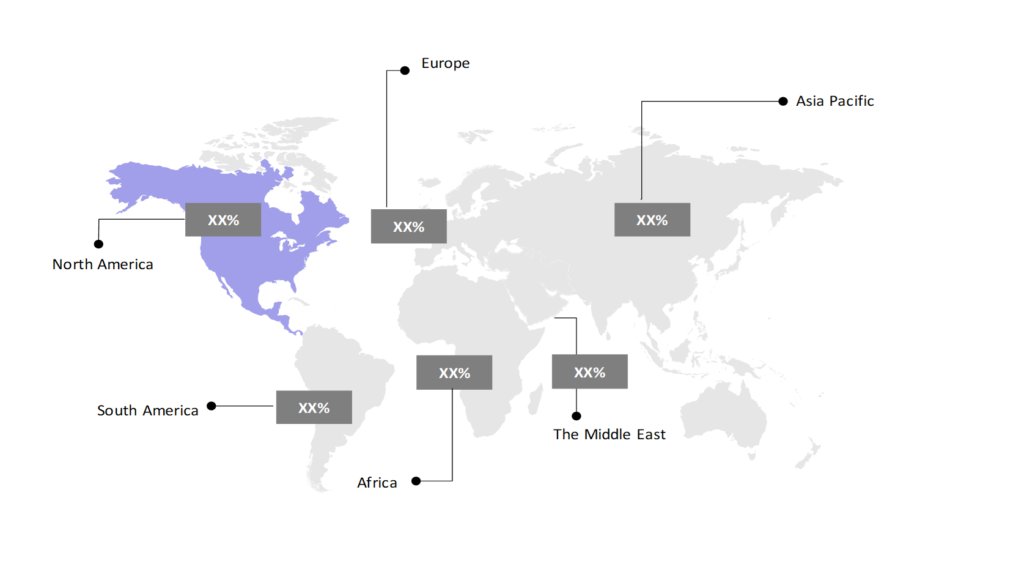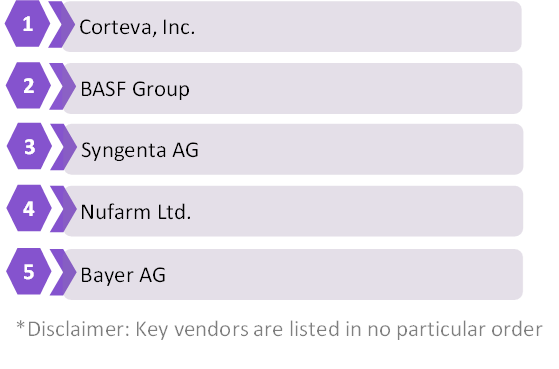Food Safety Testing Market Outlook: Size, Share, Trends & Growth Analysis (2024-2029)
The report covers a comprehensive analysis segmented by Test Type (Pathogen, Genetically Modified Organism, Allergen, Chemical and Pesticides, Others), by Food Tested (Meat, Poultry & Seafood, Dairy Products, Processed Food, Fruits & Vegetables, Others), By Technology (Traditional, Rapid), By Geography (North America, South America, Asia Pacific, Europe, the Middle East, Africa).
Food Safety Testing Market Snapshot

Food Safety Testing Market Overview
The global food safety testing market is estimated to be at $24.1 Bn in 2024 and is anticipated to reach $34.12 Bn in 2029. The global food safety testing market is registering a CAGR of 7.2% during the forecast period 2024-2029.
The food safety testing market is crucial for testing the safety and quality of food products consumed globally. It encompasses a wide range of testing methods and technologies aimed at identifying potential hazards, contaminants, and pathogens in food products throughout the production and supply chain. The market is driven by several factors, including increasing consumer awareness, stringent regulatory requirements, technological advancements, and globalization of the food supply chain.
The surge in consumer awareness regarding food safety issues has significantly impacted the food safety testing market. Fueled by media coverage of foodborne illness outbreaks and recalls, this heightened awareness has empowered consumers to prioritize food products that undergo rigorous testing procedures to ensure their safety and quality. Consequently, there is a growing demand for food safety testing services and technologies that provide reliable and accurate results.
Regulatory bodies worldwide impose stringent requirements on food manufacturers and suppliers to ensure compliance with food safety standards and regulations. Acts such as the Food Safety Modernization Act (FSMA) in the United States and similar initiatives in other countries mandate the implementation of comprehensive testing protocols and preventive measures throughout the food production and supply chain. This regulatory landscape drives the adoption of advanced testing methodologies and technologies to meet regulatory requirements and ensure consumer safety.
Technological advancements have revolutionized the food safety testing market, enabling the development of rapid, accurate, and efficient testing methods. Innovations such as PCR-based assays, biosensors, and portable testing devices facilitate faster detection of contaminants, reducing the possibility of foodborne illnesses and enhancing overall food safety.
Globalization has further compounded the complexity of the food supply chain, with food products often crossing multiple borders and passing through various stages of production, processing, and distribution. This complexity poses challenges for maintaining consistent testing protocols and traceability mechanisms across international borders, highlighting the need for standardized testing procedures and enhanced collaboration among industry stakeholders and regulatory bodies.
Overall, the food safety testing market is poised for continued growth, driven by increasing awareness, regulatory mandates, technological innovations, and globalization trends.
Food Safety Testing Market Coverage
| Historical & Forecast Period | 2018-2029 |
| Base Year | 2023 |
| Forecast Period | 2024-2029 |
| Units | Billion US$ |
| Segments | Test Type, Food Tested, Technology |
| Geographies | North America, South America, Asia Pacific, Europe, The Middle East, Africa |
| Key Vendors | Corteva, Inc., BASF Group, Syngenta AG, Nufarm Ltd., Bayer AG |
Key Geographies of Food Safety Testing Market, 2023

Porter’s 5 Forces Analysis of Food Safety Testing Market

Food Safety Testing Market Trends
The food safety testing market has seen significant growth and evolution, directed by increasing consumer awareness, regulatory requirements, and technological advancements. With the rising demand for rapid testing methods, consumers and regulatory bodies are increasingly focused on ensuring the safety of food products, which leads to the adoption of more efficient and quick testing technologies that provide accurate results in shorter timeframes. This demand has stimulated innovation in diagnostic tools, such as PCR-based assays, biosensors, and portable testing devices.
Ancera, a developer of supply chain intelligence, released two innovative tools designed to identify and enumerate clostridium perfringens and total viable bacteria (TVB) in poultry. These tools exemplify the industry’s shift towards rapid, accurate, and efficient testing technologies, providing timely results that enhance food safety and meet the growing demand from consumers and regulatory bodies for high standards in food testing.
The incorporation of automation and artificial intelligence (AI) into food safety testing is transforming the industry. Automation improves the efficiency and precision of testing procedures, while AI and machine learning algorithms assist in forecasting potential contamination incidents and refining risk assessment models. This integration enables real-time monitoring and data analysis, leading to more proactive management of food safety. For instance, in May 2024, NOMADX Holdings LLC, initiated an early access program for its portable NOMADX platform, which leverages advanced AI algorithms and automated processes to enhance on-site pathogen detection in food safety applications. By utilizing real-time monitoring and data analysis, the NOMADX platform provides faster and more accurate results.
Additionally, there is a growing emphasis on comprehensive testing solutions that cover a wide range of contaminants, including pathogens, allergens, and chemical residues. Companies are developing multifunctional platforms capable of detecting multiple contaminants simultaneously, thereby streamlining the testing process and reducing costs. For Instance, Lateral Flow Assays (LFAs), alternatively referred to as Lateral Flow Tests (LFTs), are rapid diagnostic tools with remarkable versatility. They can swiftly identify the presence or absence of a specific target analyte or biomarker, such as a particular food pathogen, allergen, or contaminant.
The market is also witnessing increased collaboration between industry players and regulatory bodies, to establish standardized testing protocols and ensure compliance with global food safety standards. This collaborative approach is essential for addressing the global food supply chain’s complexities and ensuring food products’ safety across different regions.
Food Safety Testing Market Driving Factors
The food safety testing market is driven by several key factors. Increasing consumer awareness regarding food safety issues has stimulated the demand for rigorous testing protocols, to ensure product safety. This heightened awareness is often fueled by media coverage of foodborne illness outbreaks and recalls, prompting consumers to prioritize products that undergo thorough testing.
Regulatory requirements imposed by governing bodies worldwide play a crucial role in driving market growth. These regulations mandate the implementation of comprehensive testing procedures across the food production and supply chain, to mitigate risks associated with contaminants and pathogens. The impact of stringent regulatory requirements is seen in the implementation of the Food Safety Modernization Act (FSMA) in the United States. Since its enactment in 2011, the FSMA has significantly revamped food safety regulations, prioritizing prevention over reaction to contamination incidents. Mandating comprehensive hazard analysis and risk-based preventive controls throughout the food production and supply chain, the FSMA necessitates stringent measures such as the establishment of food safety plans, regular testing and monitoring, and ensuring traceability of food products.
Furthermore, advancements in technology, particularly in the fields of molecular diagnostics and rapid testing methods, have revolutionized food safety testing. Innovations such as PCR-based assays, biosensors, and portable testing devices enable faster and more accurate detection of contaminants, driving adoption among food manufacturers and testing laboratories.
Additionally, the globalization of the food supply chain has heightened the need for robust testing measures to ensure compliance with international standards and regulations. As food products cross borders, the importance of consistent and reliable testing becomes paramount to prevent contamination and uphold public health standards.
Food Safety Testing Market Challenges
The food safety testing market faces several challenges that impact its dynamics and growth. One significant challenge is the complexity of the global food supply chain, which increases the difficulty of effectively monitoring and ensuring food safety standards.
With food products often crossing multiple borders and passing through various stages of production, processing, and distribution, maintaining consistent testing protocols and traceability becomes challenging. For instance, the Salmonella outbreak in onions in the United States in 2020, exemplifies the challenge of maintaining consistent testing protocols and traceability across international borders. The outbreak impacting numerous states, was linked to contaminated onions imported from various countries, including the United States, Mexico, and Canada. Given the intricate nature of the food supply chain and the involvement of multiple countries in the production and distribution of the contaminated onions, tracing the exact source of the outbreak and implementing timely control measures proved immensely challenging.
Moreover, the diversity of foodborne pathogens and contaminants presents a constant challenge for testing methodologies. Rapid evolution and emergence of new pathogens require continuous innovation and adaptation of testing techniques, to effectively detect and mitigate risks.
Another challenge is the cost associated with implementing comprehensive testing procedures, particularly for small and medium-sized food businesses. The initial investment in testing equipment, training, and ongoing testing protocols can be prohibitive for some companies, leading to disparities in testing capabilities across the industry.
Furthermore, the lack of harmonization of food safety regulations across different regions and countries, adds complexity and increases compliance costs for multinational food companies operating in multiple markets.
Overcoming these challenges require collaboration between industry stakeholders, governments, and regulatory bodies to develop standardized testing protocols, enhance traceability systems, and promote knowledge sharing and technology transfer.
Food Safety Testing Market – Key Industry News
- In January 2024, Ancera, a supply chain intelligence developer, introduced two new microbial detection tools aimed at the poultry industry. These tools are designed to identify and enumerate clostridium perfringens and total viable bacteria (TVB) in poultry, enhancing microbial detection capabilities.
- In October 2023, Eurofins, a global company in various testing and research services, acquired Labor 3. The acquisition bolsters Eurofins’ support for the food industry in Brazil, offering high-quality testing, consulting, and evaluation services throughout the food production chain.
Food Safety Testing Market Competitive Landscape
The food safety testing market is fiercely competitive, characterized by the presence of several key players dominating various segments. These industry leaders, offer a comprehensive range of testing services and solutions, leveraging advanced technologies and extensive expertise to meet stringent regulatory requirements and evolving consumer demands.
Alongside these major players, numerous smaller and niche companies also contribute to the competitive landscape, focusing on specialized testing services or innovative technologies. These players often cater to specific market segments or geographical regions, offering tailored solutions to meet unique customer needs.
The competitive dynamics of the market are further influenced by strategic initiatives such as mergers and acquisitions, partnerships, and collaborations. These initiatives enable companies to expand their market presence, enhance their service offerings, and capitalize on emerging opportunities in the food safety testing market. For instance, Eurofins Scientific’s acquisition of QTA, a prominent provider of analytical services for the food and environmental sectors, exemplifies how strategic initiatives shape the competitive landscape of the food safety testing market. These moves in 2021, bolstered Eurofins’ market presence and broadened its service offerings, particularly in food safety testing. By integrating QTA’s expertise and capabilities into its portfolio, Eurofins strengthened its ability to deliver comprehensive testing solutions to its clients. This strategic acquisition allowed Eurofins to capitalize on emerging opportunities in the market and solidify its position as a leading player in the industry.
Moreover, the market’s competitiveness is driven by continuous innovation and investment in research and development to develop advanced testing methodologies and technologies. Companies strive to differentiate themselves by offering faster, more accurate, and cost-effective testing solutions to gain a competitive edge in the market.
Overall, the food safety testing market’s competitive landscape is dynamic and multifaceted, with both established players and emerging companies vying for market share by delivering high-quality, reliable testing services to ensure food safety and consumer protection.
Food Safety Testing Market Company Share Analysis, 2023 (%)

Food Safety Testing Market – Key Companies

Reason to Buy from us

Table of Contents
| 1. Introduction |
|---|
| 1.1. Research Methodology |
| 1.2. Scope of the Study |
| 2. Market Overview / Executive Summary |
| 2.1. Global Food Safety Testing Market (2018 – 2022) |
| 2.2. Global Food Safety Testing Market (2023 – 2029) |
| 3. Market Segmentation |
| 3.1. Global Food Safety Testing Market by Test Type |
| 3.1.1. Pathogen |
| 3.1.2. Genetically Modified Organism |
| 3.1.3. Allergen |
| 3.1.4. Chemical and Pesticides |
| 3.1.5. Others |
| 3.2. Global Food Safety Testing Market by Food Tested |
| 3.2.1. Meat, poultry & sea food |
| 3.2.2. Dairy Products |
| 3.2.3. Processed Food |
| 3.2.4. Fruits & Vegetables |
| 3.2.5. Others |
| 3.3. Global Food Safety Testing Market by Technology |
| 3.3.1. Traditional |
| 3.3.2. Rapid |
| 4. Regional Segmentation |
| 4.1. North America |
| 4.1.1. The U.S |
| 4.1.2. Canada |
| 4.1.3. Mexico |
| 4.2. South America |
| 4.2.1. Brazil |
| 4.2.2. Argentina |
| 4.2.3. Colombia |
| 4.2.4. Chile |
| 4.2.5. Rest of South America |
| 4.3. Asia Pacific |
| 4.3.1. China |
| 4.3.2. India |
| 4.3.3. Japan |
| 4.3.4. South Korea |
| 4.3.5. Rest of Asia Pacific |
| 4.4. Europe |
| 4.4.1. UK |
| 4.4.2. Germany |
| 4.4.3. Italy |
| 4.4.4. France |
| 4.4.5. Spain |
| 4.4.6. Rest of Europe |
| 4.5. The Middle East |
| 4.5.1. Turkey |
| 4.5.2. UAE |
| 4.5.3. Saudi Arabia |
| 4.5.4. Rest of the Middle East |
| 4.6. Africa |
| 4.6.1. Egypt |
| 4.6.2. South Africa |
| 4.6.3. Rest of Africa |
| 5. Value Chain Analysis of the Global Food Safety Testing Market |
| 6. Porter Five Forces Analysis |
| 6.1. Threats of New Entrants |
| 6.2. Threats of Substitutes |
| 6.3. Bargaining Power of Buyers |
| 6.4. Bargaining Power of Suppliers |
| 6.5. Competition in the Industry |
| 7. Trends, Drivers and Challenges Analysis |
| 7.1. Market Trends |
| 7.1.1. Market Trend 1 |
| 7.1.2. Market Trend 2 |
| 7.1.5. Market Trend 3 |
| 7.2. Market Drivers |
| 7.2.1. Market Driver 1 |
| 7.2.2. Market Driver 2 |
| 7.2.3. Market Driver 3 |
| 7.3. Market Challenges |
| 7.3.1. Market Challenge 1 |
| 7.3.2. Market Challenge 2 |
| 7.3.3. Market Challenge 3 |
| 8. Regulatory Landscape |
| 9. Competitive Landscape |
| 9.1. Corteva, Inc. |
| 9.2. BASF Group |
| 9.3. Syngenta AG |
| 9.4. Nufarm Ltd. |
| 9.5. Bayer AG |
| 9.6. Company 6 |
| 9.7. Company 7 |
| 9.8. Company 8 |
| 9.9. Company 9 |
| 9.10. Company 10 |
Food Safety Testing Market – Frequently Asked Questions (FAQs)
What is the current size of the global food safety testing market?
The market size for the global food safety testing market in 2024 is $24.1 Bn.
Who are the major vendors in the global food safety testing market?
The major vendors in the global food safety testing market are Corteva, Inc., BASF Group, Syngenta AG, Nufarm Ltd., and Bayer AG.
Which segments are covered under the global food safety testing market segments analysis?
This report offers in-depth insights into each test type, food tested, and technology.
